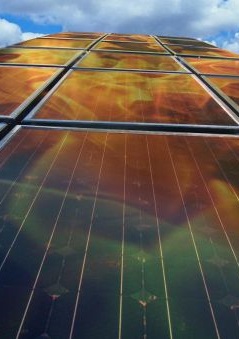Solar flaw revealed
 Engineers have solved a key flaw in solar panels after 40 years of research.
Engineers have solved a key flaw in solar panels after 40 years of research.
Solar panels are surging in popularity due to their relatively low cost and high consumer availability. However, most solar cells achieve only 20 per cent efficiency – meaning that for every kW of equivalent sunlight, about 200W of electrical power can be generated.
Now, an international team of researchers have resolved a key fundamental issue of material defect which limits and degrades solar cell efficiency. The problem has been known about and studied for over 40 years, with over 270 research papers attributed to the issue with no solution.
The research uncovered a previously unknown material defect which limits silicon solar cell efficiency.
“Because of the environmental and financial impact solar panel ‘efficiency degradation’ has been the topic of much scientific and engineering interest in the last four decades,” says research coordinator Prof Tony Peaker.
“However, despite some of the best minds in the business working on it, the problem has steadfastly resisted resolution until now.
“During the first hours of operation, after installation, a solar panel’s efficiency drops from 20 per cent to about 18 per cent.
“An absolute drop of 2 per cent in efficiency may not seem like a big deal, but when you consider that these solar panels are now responsible for delivering a large and exponentially growing fraction of the world’s total energy needs, it’s a significant loss of electricity generating capacity.”
The energy cost of this shortfall across the world’s installed solar capacity measures in the 10’s of gigawatts, this is equivalent to more energy than is produced by the UK’s combined total of 15 nuclear power plants.
The solar shortfall therefore must be met by other less sustainable energy sources such as burning fossil fuels.
The researchers identified the mechanism responsible for Light Induced Degradation (LID). Combining a specialised electrical and optical technique, known as ‘deep-level transient spectroscopy’ (DLTS), the team have uncovered the existence of a material defect which initially lies dormant within the silicon use to manufacture the cells.
The electronic charge within the bulk of the silicon solar cell is transformed under sunlight, part of its energy generating process.
The team found that this transformation involves a highly effective 'trap' that prevents the flow of photo-generated charge carriers (electrons).
Dr Iain Crowe said: “This flow of electrons is what determines the size of the electrical current that a solar cell can deliver to a circuit, anything that impedes it effectively reduces the solar cell efficiency and amount of electrical power that can be generated for a given level of sunlight. We’ve proved the defect exists, it’s now an engineering fix that is needed.”








 Print
Print